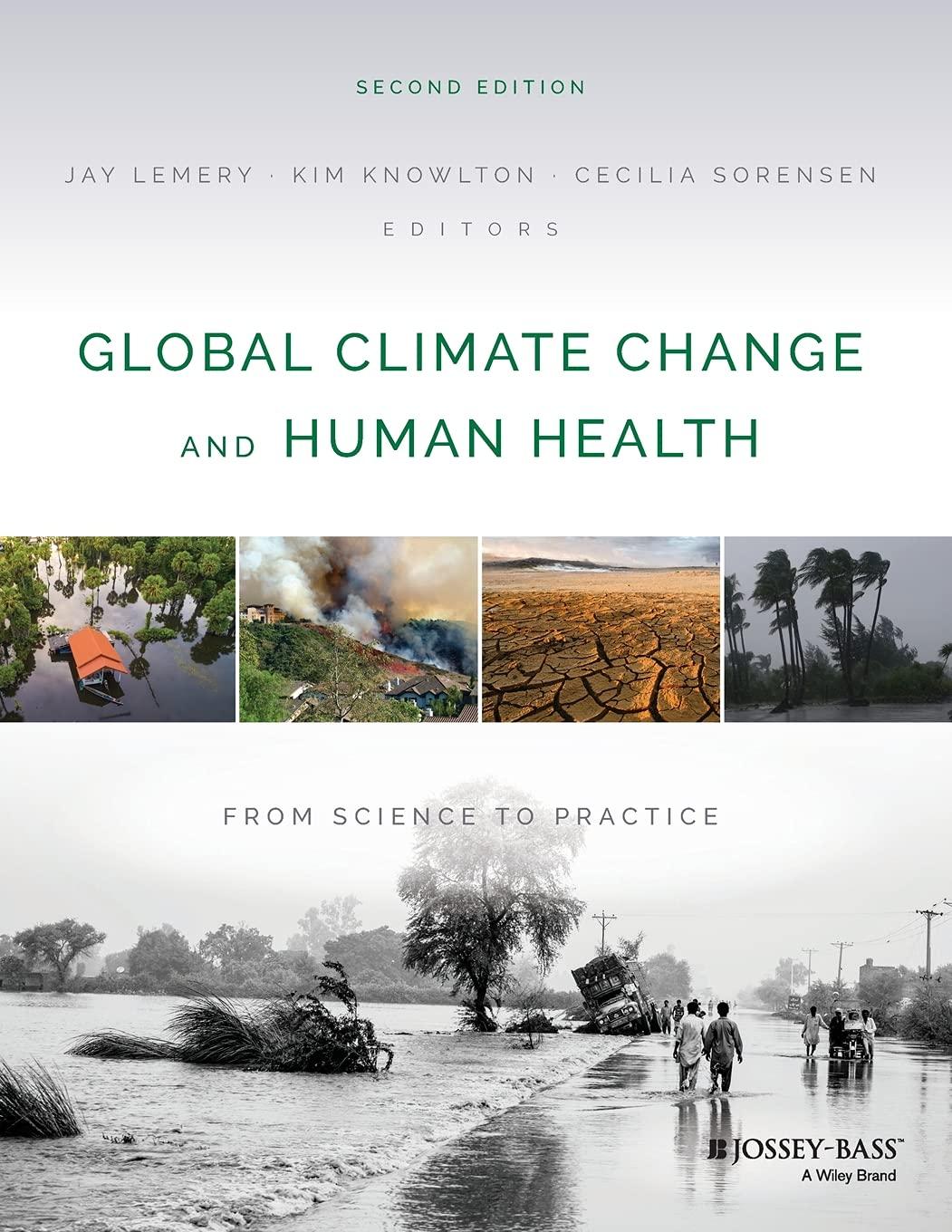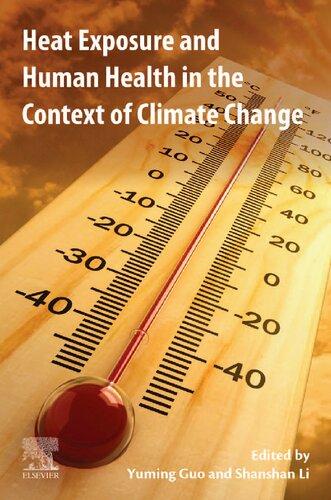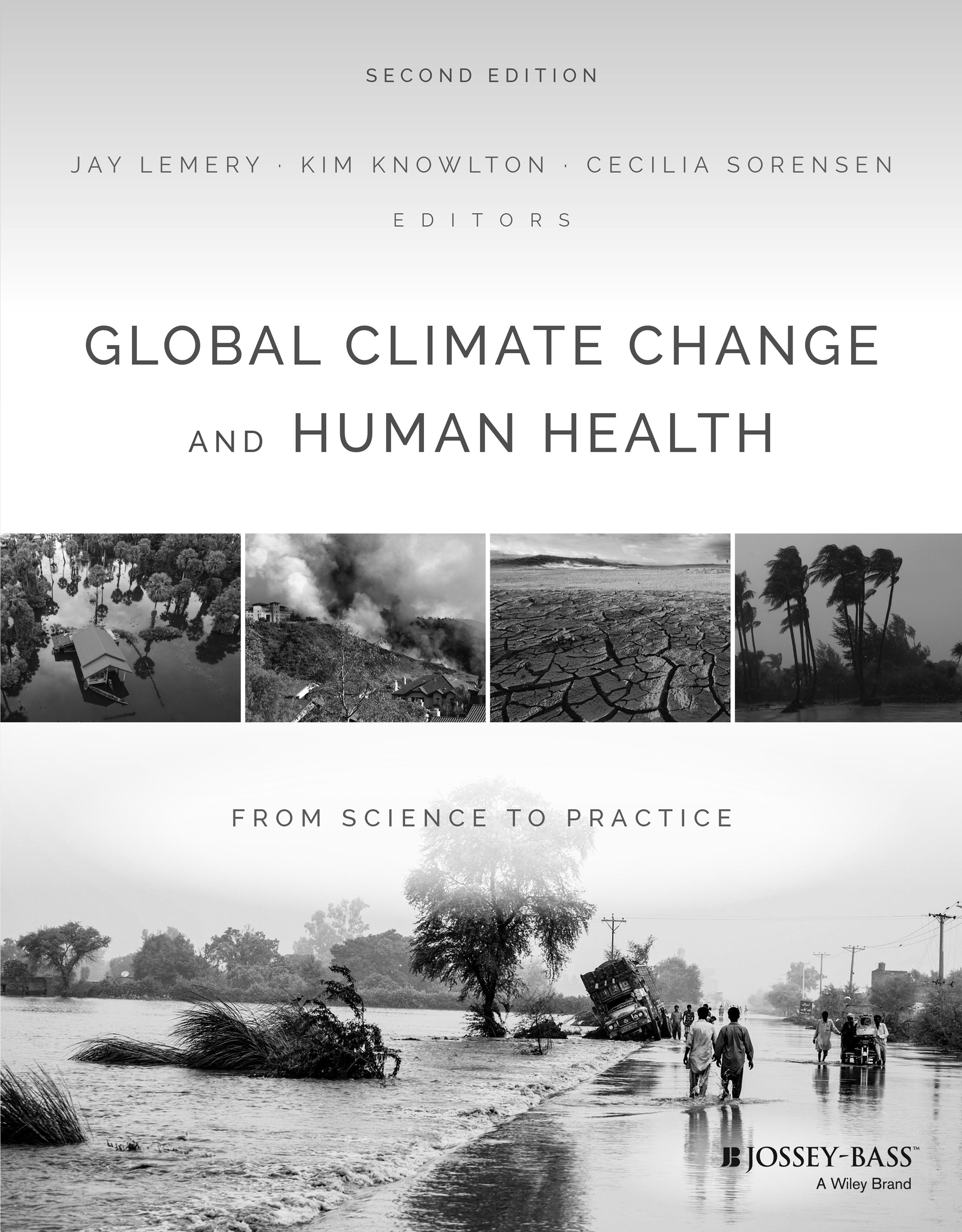https://ebookmass.com/product/global-climate-change-andhuman-health-2nd-edition-jay-lemery/
Instant digital products (PDF, ePub, MOBI) ready for you
Download now and discover formats that fit your needs...
Heat Exposure and Human Health in the Context of Climate Change Yuming Guo
https://ebookmass.com/product/heat-exposure-and-human-health-in-thecontext-of-climate-change-yuming-guo/
ebookmass.com
Urban Ecology and Global Climate Change Rahul Bhadouria
https://ebookmass.com/product/urban-ecology-and-global-climate-changerahul-bhadouria/
ebookmass.com
Mobilizing Hope: Climate Change and Global Poverty Darrel Moellendorf
https://ebookmass.com/product/mobilizing-hope-climate-change-andglobal-poverty-darrel-moellendorf/
ebookmass.com
5 Steps to a 5: AP Computer Science Principles, 2nd Edition Julie Schacht Sway
https://ebookmass.com/product/5-steps-to-a-5-ap-computer-scienceprinciples-2nd-edition-julie-schacht-sway/
ebookmass.com
Beyond Media Borders, Volume 2: Intermedial Relations among Multimodal Media 1st ed. Edition Lars Elleström
https://ebookmass.com/product/beyond-media-bordersvolume-2-intermedial-relations-among-multimodal-media-1st-ed-editionlars-ellestrom/
ebookmass.com
Electromagnetic Composites Handbook: Models, Measurement, and Characterization 2nd Edition Rick Moore
https://ebookmass.com/product/electromagnetic-composites-handbookmodels-measurement-and-characterization-2nd-edition-rick-moore/
ebookmass.com
Escaping from Bad Decisions A Behavioral DecisionTheoretic Perspective. Kazuhisa Takemura
https://ebookmass.com/product/escaping-from-bad-decisions-abehavioral-decision-theoretic-perspective-kazuhisa-takemura/
ebookmass.com
Heritage Conservation in the United States: Enhancing the Presence of the Past John H. Sprinkle Jr.
https://ebookmass.com/product/heritage-conservation-in-the-unitedstates-enhancing-the-presence-of-the-past-john-h-sprinkle-jr/
ebookmass.com
Barbara Cartland The Eternal Collection: Books 101 - 110 (The Eternal Collection Compilations) Barbara Cartland
https://ebookmass.com/product/barbara-cartland-the-eternal-collectionbooks-101-110-the-eternal-collection-compilations-barbara-cartland/ ebookmass.com
The Human Rights-Based Approach to Higher Education: Why Human Rights Norms Should Guide Higher Education Law and Policy
Jane Kotzmann
https://ebookmass.com/product/the-human-rights-based-approach-tohigher-education-why-human-rights-norms-should-guide-higher-educationlaw-and-policy-jane-kotzmann/ ebookmass.com
GLOBAL CLIMATE CHANGE AND HUMAN HEALTH
Second Edition
Edited by
Jay Lemery, MD
University of Colorado, Anschutz Medical Campus Aurora, CO
Kim Knowlton, DrPH
Columbia University, Mailman School of Public Health New York, NY
Cecilia Sorensen, MD
University of Colorado, Anschutz Medical Campus Aurora, CO
This edition first published copyright year © copyright year 2021 John Wiley & Sons, Inc.
Edition History
John Wiley & Sons, Inc. (1e, 2015)
All rights reserved. No part of this publication may be reproduced, stored in a retrieval system, or transmitted, in any form or by any means, electronic, mechanical, photocopying, recording or otherwise, except as permitted by law. Advice on how to obtain permission to reuse material from this title is available at http://www.wiley.com/go/permissions.
The right of Jay Lemery, Kim Knowlton, and Cecilia Sorensen to be identified as the authors of the editorial material in this work has been asserted in accordance with law.
Registered Office
John Wiley & Sons, Inc., 111 River Street, Hoboken, NJ 07030, USA
Editorial Office
111 River Street, Hoboken, NJ 07030, USA
For details of our global editorial offices, customer services, and more information about Wiley products visit us at www.wiley.com.
Wiley also publishes its books in a variety of electronic formats and by print-on-demand. Some content that appears in standard print versions of this book may not be available in other formats.
Limit of Liability/Disclaimer of Warranty
While the publisher and authors have used their best efforts in preparing this work, they make no representations or warranties with respect to the accuracy or completeness of the contents of this work and specifically disclaim all warranties, including without limitation any implied warranties of merchantability or fitness for a particular purpose. No warranty may be created or extended by sales representatives, written sales materials or promotional statements for this work. The fact that an organization, website, or product is referred to in this work as a citation and/or potential source of further information does not mean that the publisher and authors endorse the information or services the organization, website, or product may provide or recommendations it may make. This work is sold with the understanding that the publisher is not engaged in rendering professional services. The advice and strategies contained herein may not be suitable for your situation. You should consult with a specialist where appropriate. Further, readers should be aware that websites listed in this work may have changed or disappeared between when this work was written and when it is read. Neither the publisher nor authors shall be liable for any loss of profit or any other commercial damages, including but not limited to special, incidental, consequential, or other damages.
Library of Congress Cataloging-in-Publication Data
Names: Luber, George, editor. | Lemery, Jay, editor. | Knowlton, Kim, editor. | Sorensen, Cecilia, editor.
Title: Global climate change and human health : from science to practice / edited by George Luber, Jay Lemery, Kim Knowlton, Cecilia Sorensen.
Description: Second edition. | San Francisco : Jossey-Bass, 2020. | Includes bibliographical references and index.
Identifiers: LCCN 2020028113 (print) | LCCN 2020028114 (ebook) | ISBN 9781119667957 (paperback) | ISBN 9781119670018 (Adobe PDF) | ISBN 9781119669999 (epub)
Subjects: MESH: Climate Change | Environmental Health | Global Health
Classification: LCC RA793 (print) | LCC RA793 (ebook) | NLM WA 30.2 | DDC 615.9/02—dc23
LC record available at https://lccn.loc.gov/2020028113
LC ebook record available at https://lccn.loc.gov/2020028114
Cover Design: Wiley
Cover Image: © Usman Ahmad/EyeEm/Getty Images, Ratnakorn Piyasirisorost/Getty Images, Mitch Diamond/Getty Images, Rehman Asad/Getty Images, Marco Bottigelli/Getty Images
Set in size of 10.5/14 and Warnock Pro by SPi Global, Chennai
10 9 8 7 6 5 4 3 2 1
JL: In loving memory of two of the world’s most formidable mentors: Dean Jack Blackburn and Mr. Jim Westhall. Here’s some evidence that you are indeed still changing the world!
KK: With love and gratitude to my parents, Stewart Knowlton and Nadine Wolfe, for their kindness and encouraging hours of scientific discovery under the big willow tree; and to my loving husband, Allen, for his patience and for asking the best questions.
CS: To future generations—may you enjoy the beauty of this wondrous planet. To my mentors for their inspiration and determination; and of course to Zach—for all the love, encouragement, and laughs.
Dedication
Preface
Foreword: Climate Change and the Pandemic
Acknowledgements
The Editors
The Contributors
Commentary on COVID-19, Climate Change, and Human Health
Jay Lemery, Kim Knowlton, Cecilia Sorensen, and Hanna Linstadt
Christopher K. Uejio, James D. Tamerius, Yoonjung Ahn, and Elaina Gonsoroski Scientific
Climate Variability, Climate Change, and Scientific
Chapter 4 Climate Change Impacts on the Hydrologic Cycle and Waterborne Diseases
Jan C. Semenza
Changes in Hydrology Caused by Climate Change
Waterborne Pathogens Sensitive to Climate Change
Chapter 8 Climate and Its Impacts on Vector-Borne Diseases .............. 151
Andrea G. Buchwald, Jada F. Garofalo, Kenneth L. Gage, Charles B. Beard, and Rosemary Rochford
Arboviruses
Malaria
Lyme Disease in the United States
Summary and Conclusions
References
Chapter 9 Food Systems Transformation: Toward Sustainable and Healthy Diets for All
Cristina Tirado
Impacts of Climate Change and Variability on Food Security and Malnutrition .
172
Vulnerability to Climate Impacts on Food Insecurity and Malnutrition 176
Foodborne and Waterborne Diseases and Emerging Risks
Integrated Multisectoral Adaptation for Malnutrition
Sustainable and Healthy Food Systems and Dietary Patterns
176
177
180
Conclusions 181
References
Chapter 10 Climate Change and Population Mental Health
Salma M. Abdalla, Abdulrahman M. El-Sayed, and Sandro Galea
Climate Change Effect on Mental Health: Mechanisms
and Violent Conflict
Tracy A. Cushing and Cecilia J. Sorensen
182
Climate-Related Disasters and Forced Migration
Infectious Diseases and Vector-Borne Illness
The Role of Women and Gender in Climate Change Policy and Planning
Kristopher B. Karnauskas
Greenhouse Gases and Radiative Forcing
What Is a Global Climate Model?
Global Climate Models and Global Change Science
Climate and Health Vulnerability Assessments: New Approaches and Tools for Adaptation Planning
Peter Berry, Kristie L. Ebi, Rebekka Schnitter, Louise Aubin, and Sherilee Harper
The Role of Vulnerability and Adaptation Assessments in Preparing for Climate Change Impacts on Health
Methods for Undertaking a Vulnerability and Adaptation Assessment
The Path Forward: Lessons Learned and Opportunities for Undertaking Future Vulnerability and Adaptation Assessments
The Role of Indigenous Knowledge in Climate Change and Health Vulnerability and Adaptation Assessments
Nikhil A. Ranadive and Jeremy J. Hess
Chapter 16 Protecting Environmental Justice Communities from the Detrimental Impacts of Climate Change
Cecilia Martinez and Nicky Sheats
Introduction
Heat
Extreme
Indigenous
Chapter 17 Climate Change Communication
Adam Corner, Chris Shaw, Stuart Capstick, and Nick Pidgeon
Public
Chapter 20
Ambereen K. Shaffie
Challenges to Creating Effective Health-Climate Policies
International Governance Structures Addressing Climate Mitigation
An Introduction to Legal Instruments Relevant to the Health-Climate Nexus
Climate Negotiations: What Is It Like to Be in the Room?
Alison Blaiklock, Carmel Williams, and Rhys Jones
Chapter 24 Valuing Climate Change Impacts on Human Health
Allison Crimmins
Introduction: Why Do We Value the Climate Change Impacts on Human Health?
Economic Valuation: How Do We Value the Climate Change Impacts on Human Health?
Economic Models: Projecting Future Climate Damages
Examples of Health Damage Estimates from Climate
Summary
References
Caitlin S. Rublee, Emilie Calvello Hynes, and John M. Balbus Introduction
Impacts of Extreme Weather Events on Health Care Systems
Natural Systems and Resources
International Frameworks for Health Care System Resilience
Economics and Equity: Closing the Gaps in Health System Resilience in Low-Income Countries
Richard Salkowe and Mark R. Hafen
Causes and Consequences of Biodiversity Loss
Lydia Olander, Sara Mason, Heather Tallis, Joleah Lamb, Yuta J. Masuda, and Randall Kramer
How Does Climate Change Affect Ecosystem Services that Have an Impact on Human Health?
OneHealth: An Alaskan Framework for Addressing the Health Impacts of Climate
Surveillance for Climate-Related Exposures and Health Outcomes in Alaska 571
Climate Adaptation Planning in Alaska
Next Steps in Addressing Climate and Health in Alaska
Conclusion
Acknowledgment
573
575
Chapter 31 The Global Energy Transition and Public Health in a Changing Climate ................................ 583
Hanna Linstadt, Cecilia J. Sorensen and Morgan D. Bazilian
Introduction
583
Current Trends in Global Energy Supply 584
The Energy Transition and Climate Change
Global Energy Poverty and the SDGs
Clean Energy Transitions and Health
584
585
587
Conclusion 588 References
Loss of Coral Reefs
Carolyn Sotka
The Nurses Climate Challenge: A Model for Health Professional Climate Action
Shanda Demorest
Glossary
PREFACE
Recently, we took a field trip with a group of public health and medical students to the National Science Foundation Ice Core Facility in Lakewood, Colorado. The students were taking one of the nation’s first medical school courses in climate change and health, and it was time to get out of the classroom to see science in action. We weren’t quite sure what to expect as, essentially, we were going to visit a warehouse full of ancient ice.
It was May, but we were told to bring our deep winter gear—down jackets, hats, and gloves. The room was built for Arctic winter, set at 40° below, the singular temperature where Fahrenheit is the same as Celsius. After a short film explaining the process of ice core science, we were introduced to the star of the show: there, in all its cryogenic glory, a recumbent ice tube containing the atmospheric carbon record of the last several thousand years. The staff was masterful in recounting a science narrative explaining how the project was conceived, data obtained, and conclusions rendered.
The students were mesmerized. We witnessed a cascade of “ah-ha!” moments, the Holy Grail for any educator where the abstract notions, numbers, and equations all come together in a spark of enlightenment for the learner. For us, that day was more than a lesson in science, it was a lesson in the power of science communication—our highest aspiration as we bring you the most up-to-date expert climate and health science in this second edition.
Much has changed since we published our first edition in 2015.
We can be thankful that the science of climate change has advanced remarkably, while simultaneously, economically viable green technologies have emerged at an unprecedented rate. Despite public acceptance around climate science globally, we’ve seen a backlash against science-backed climate policy and intransigence toward policy action, especially in the United States. Understanding public opinion and perceptions around climate change and science, which can shape or hinder smart policy, has become a science unto itself, and we explore that in this book.
New challenges have emerged that are rewriting climate narratives. We now must incorporate the profound impact of the recent pandemic into our work and understand how they are related. Do the public health remedies for both coincide? Although we have yet to fully digest this experience, what is clear is that COVID-19 shows us how fragile our interconnections are and how rapidly we can mobilize resources—both human action and financial resources—to address a common threat. It also offers a palpable admonishment of our custodianship of the commons and the limitations of current governance—both national and international—to implement policy. Yet there is no doubt the COVID-19 crisis presents an opportunity for us to upgrade our operating system, to think about public health resilience, energy policy, and global governance.
Despite the rapidly changing events, the goal of this textbook remains the same: to serve as a resource for public health and clinical medicine practitioners, students, and learners. We crafted this book to be a comprehensive source on climate and health issues, authored by the experts who demonstrate mastery of the many complex facets of this topic. We added innovative pedagogical elements, expanded clinical correlations from the first edition, led each chapter with key concepts; included a glossary, and are again supporting educators with materials
in the form of electronic teaching slides with accompanying multiple choice and essay questions.
New to this second edition are updates to the core climate and health science topics, issues of health equity, novel perspectives from clinical medicine and allied health professions, and an expansive discussion on the dizzying aspects of global governance. We have likewise recruited experts to share science on the unique vulnerabilities that women suffer from climate change as well as the interrelated topics of ecosystem services and loss of biodiversity.
It is our sober assessment that when it comes to protecting our health from climate change, we are not keeping pace. It’s easy to look at the table of contents and feel pessimistic. Yet there is much for which to be hopeful. Since the publication of our last edition, medical societies have banded together in action and joined thousands of public entities in divesting from fossil fuels, major medical journals have prioritized climate-related topics, graduate schools of public health and medicine have launched dedicated climate and health curricula, and energetic grassroots student groups have emerged across campuses. Perhaps most telling is that public opinions are slowly changing.
One thing is certain: the science will advance, and in that regard, we feel fortunate to have this platform to share with you. May our next edition reflect the health implications from shifts in grassroots perceptions, the maturation of clean technologies in the marketplace, and the efficacy of smart policies enacted.
We believe this is the grand health challenge of our times. For us, there is no better outlet for our intellectual and creative energies than to present the work of our accomplished authors to you.
Jay Lemery
Kim Knowlton
Cecilia Sorensen
FOREWORD: CLIMATE CHANGE AND THE PANDEMIC
Craig Spencer
My career in medicine and public health has brought me to sub-Saharan Africa and southeast Asia, as well as the American southwest. I’ve responded to outbreaks of hepatitis E in Chad, Ebola in West Africa, and most recently on the frontlines of coronavirus disease 2019 (COVID-19) in New York City.
Despite being different outbreaks in different places, the one constant similarity in all was how public health crises always disproportionately affect already marginalized and vulnerable communities.
For a long time, we’ve known that we were susceptible to a global pandemic. In recent decades, outbreaks of SARS (severe acute respiratory syndrome coronavirus 2) and MERS (Middle East respiratory syndrome) alerted us to the possible implications of global spread. The 2014–2016 West Africa Ebola outbreak further highlighted how a public health threat anywhere represents a threat everywhere. In the aftermath of all of these outbreaks, lessons learned documents formed the basis for adaptations and change. Yet despite all this, when COVID-19 rapidly spread around the world in 2020, we found ourselves unprepared.
Along with the recent rise of nationalism and antimigrant rhetoric, there has been increasing critique of the globalist mindset—this idea that the people and nations of the world are inextricably linked. As countries have gradually receded and focused inward, they’ve taken apart and undermined much of the preparedness done to prevent and respond to a global public health threat.
The Social Injustice of the Pandemic
In that sense, it’s not the COVID-19 pandemic that was surprising. It’s how poorly we managed it. Throughout history, epidemics arise on the margins of our society, the disease taking root among the most vulnerable. It was Virchow who noted that medicine is a social science and politics is nothing else but medicine on a large scale (Virchow 1985). The mortality rate from COVID-19 is highest among the elderly, communities of color, and those with preexisting health conditions and is likely to be devastating for the poorest and in the developing world.
Climate Justice
Unfortunately, we know this is a harbinger of things to come. The pandemic experience foreshadows the health impacts from climate change, compounding every year with extreme weather patterns, sea level rise, food and water insecurity, and many other drivers articulated in this textbook. As the authors consistently point out in each of these chapters, it’s the most marginalized and vulnerable who will suffer the most—through geography, age, socioeconomic status, and medical comorbidities. The public health policy response to the COVID-19 pandemic has pitted individual rights against collective action. I am too sanguine to think that apolitical unity would be a default societal response in these times; however, we do have powerful tools to lead and to continue to shape the policy narrative.
We can lead on the incredible successes of data-driven public health responses. Even before John Snow’s eureka moment at the Broad Street pump, the world has benefited from global health initiatives proven to be a sound investment. No better example exists than the global campaign against smallpox, which was finally eradicated in 1980. Smallpox had long been humanity’s greatest scourge. In the late 1700s, smallpox was so feared that even the first president of the United States—George Washington, himself a smallpox survivor—described it as a “greater threat than. . .the Sword of the Enemy.” For the unparalleled commitment to smallpox eradication, the United States saves the total of all its historic contributions to ending smallpox every 26 days because it does not have to vaccinate or treat the disease (Center for Global Development n.d.).
The worldwide response to the HIV/AIDS pandemic recognized that supporting global health initiatives not only has a humanitarian impact. PEPFAR (President’s Emergency Plan for AIDS Relief) was established in 2003 by President George W. Bush to increase access to HIV/ AIDS treatment around the world. Since its inception, this program has greatly reduced HIV/ AIDS-related morbidity and mortality by providing treatment to millions of men, women, and children worldwide. Subsequently, we have also seen the profound strategic national and international benefits by preventing social unrest and political instability in the countries most affected by HIV/AIDS in the developing world.
To date, many in the developed world have equated emergency preparedness with individual preparedness. But none of us has the individual ability to affect our sick neighbors’ risk of disease spread or to roll out widespread testing for evidence of infection. Collective action is a precondition for managing any public health crisis, be it from a pandemic or global environmental change—and these actions are not necessarily rooted in protecting the individual as much as protecting the most vulnerable in our communities.
Leading
Yet because the pandemic has upended many of our assumptions—not only about public health but also governance, economic models, and social policies—you readers have an unprecedented opportunity to lead on this issue. And the rhetoric you choose does not have to be steeped in dour consequences—we have a lot to be excited about and to give the public a positive reason for change. We can lead on solutions.
Technology is giving us better ways tools to decarbonize while reducing the cost of energy. Wright’s law—a model that predicts plummeting costs as new technology comes to scale—has proven true for wind, solar, and battery power. In many instances these technologies are now cheaper than oil and gas, ushering a future of cheap and abundant clean energy. As we think about how to reinvigorate our economy from the pandemic, such opportunities afford us a synergistic benefit in both job creation for a growing market and reduced greenhouse gas emissions.
The reputation of science has taken some bruising in recent years. But when it comes to illness or injury, everyone wants the best science working for themselves and their loved ones. Therein lies our ability to affect public risk assessment and to advance an evidence-based approach toward risk and opportunity.
I conclude by sharing with you a moment from my time on the frontlines of Ebola in West Africa. I had seen so many succumb to this disease and I felt like I hadn’t made a difference. Yet one day, while being treated for Ebola myself in a hospital in New York City, I received a call from someone far away. She heard I was sick and called to thank me for caring for her family and to wish me well. I recognized then that I had indeed made an impact. Because over and over she thanked me. She believed if I hadn’t been there to take care of her and her family none of them would have survived this disease.
In caring for others I had created a community of people across the world who cared about me because I had cared about them.
If we are to successfully tackle the public health and climate challenges in coming years, we will need collective action. Action based on creating a worldwide community that cares about others. If the COVID-19 pandemic taught us anything, it’s that in times of global crisis we need global solidarity.
This book is a framework for the actions and decisions we need to foster this global community of caring. But it is only by operationalizing our voices, our advocacy, and our passion that we will create the collective response necessary to confront the public health and climate crises that undoubtedly lie in front of us.
References
Center for Global Development. n.d. Case 1: Eradicating Smallpox. https://www.cgdev.org/page/ case-1-eradicating-smallpox Virchow, R. 1985. “The Charity Physician (1848).” In Collected Essays on Public Health and Epidemiology, edited by L. J. Rather. Canton, MA: Science History Publications.
ACKNOWLEDGEMENTS
We would like to acknowledge the incredible efforts from our editorial team! We are grateful for their superb contributions to this second edition.
Beth Gillespie, MD, associate editor for pedagogical elements
Elaine Reno, MD, associate editor for supporting education materials, who led a team of motivated and talented editorial assistants: Ian Liu, William Mundo, Jessica Phan, Gavriel Roda, and Alessandra Santiago
Caitlin Rublee, MD, assistant editor for Clinical Correlates













